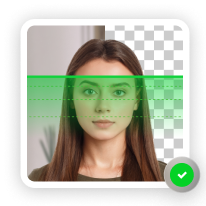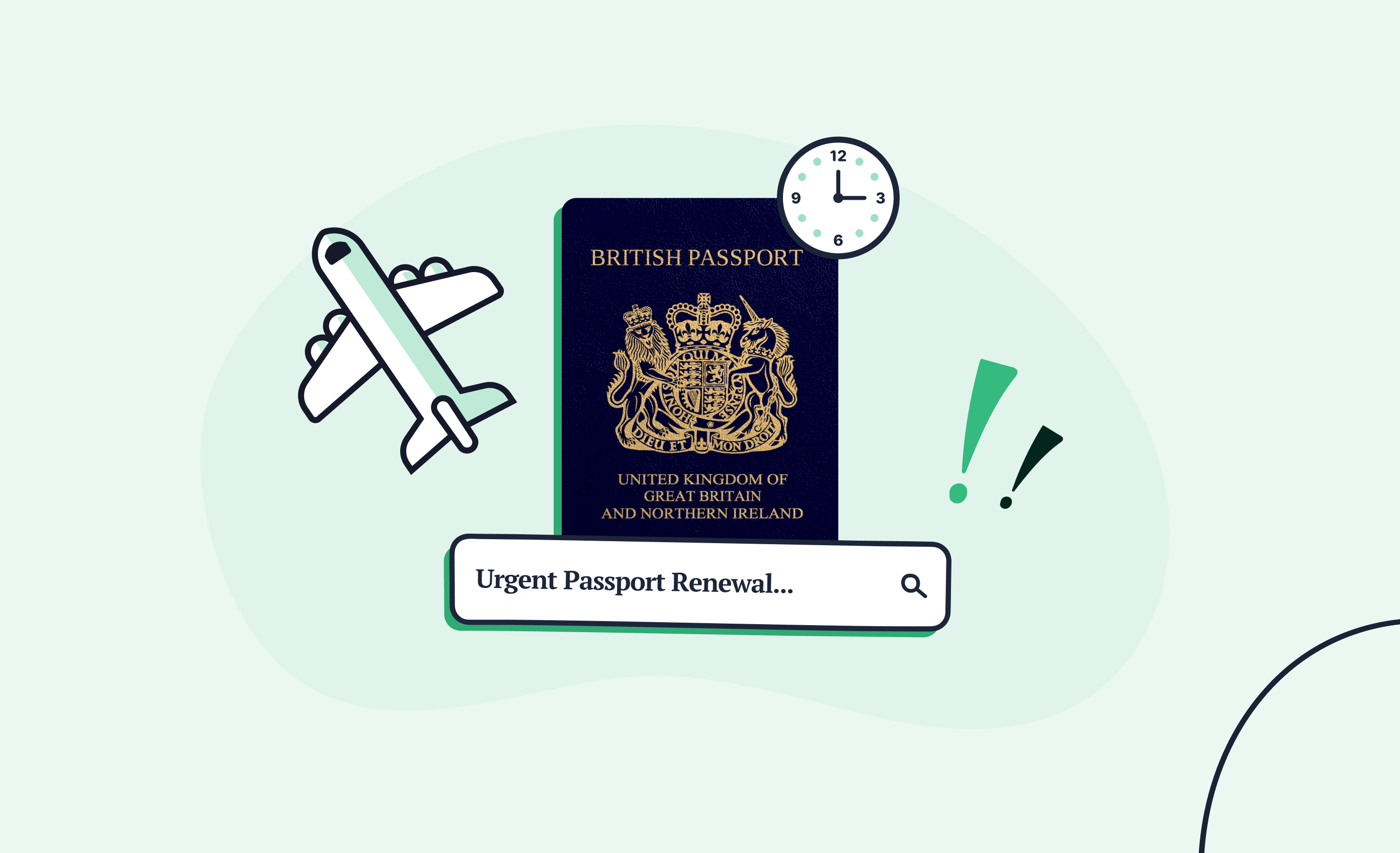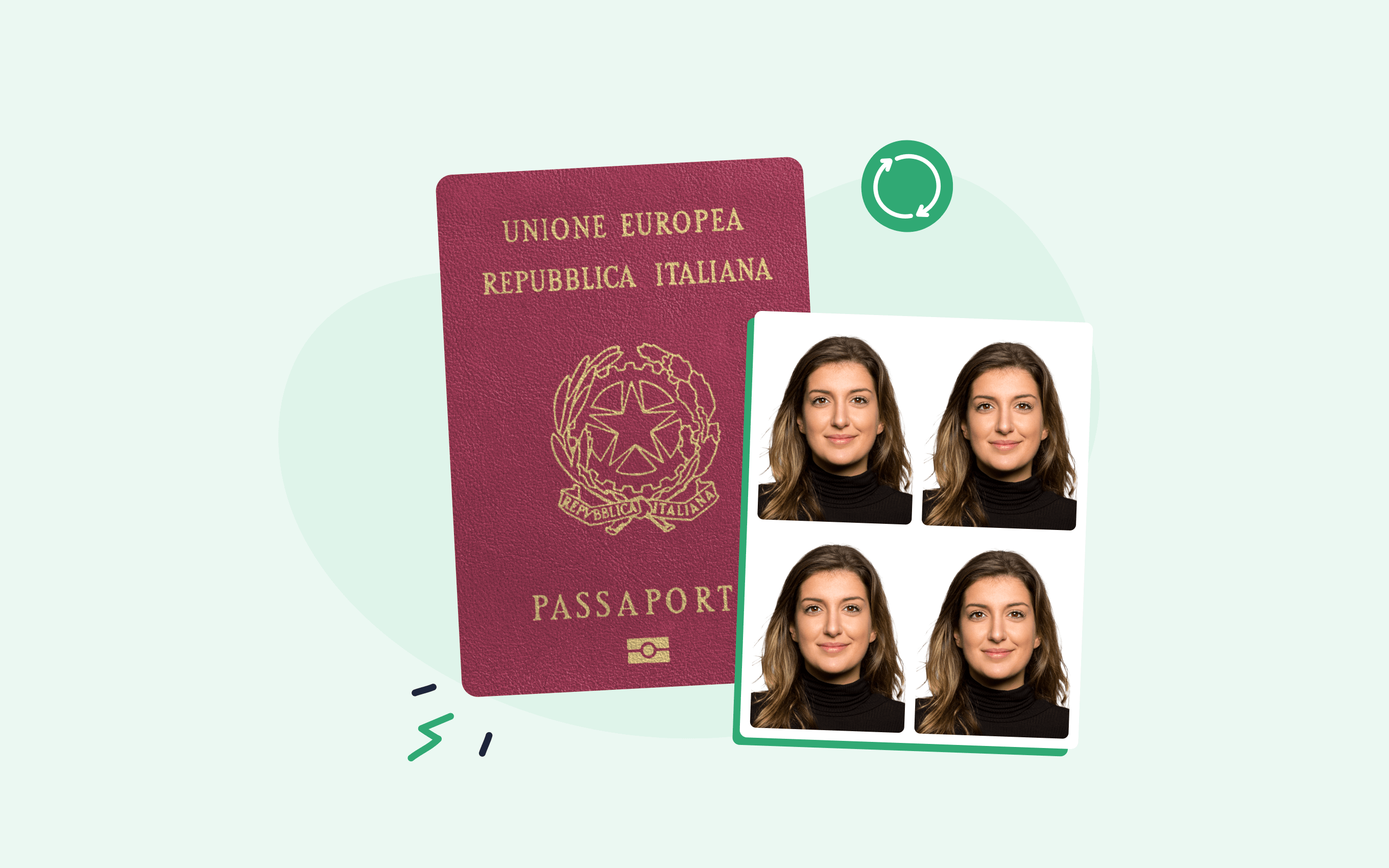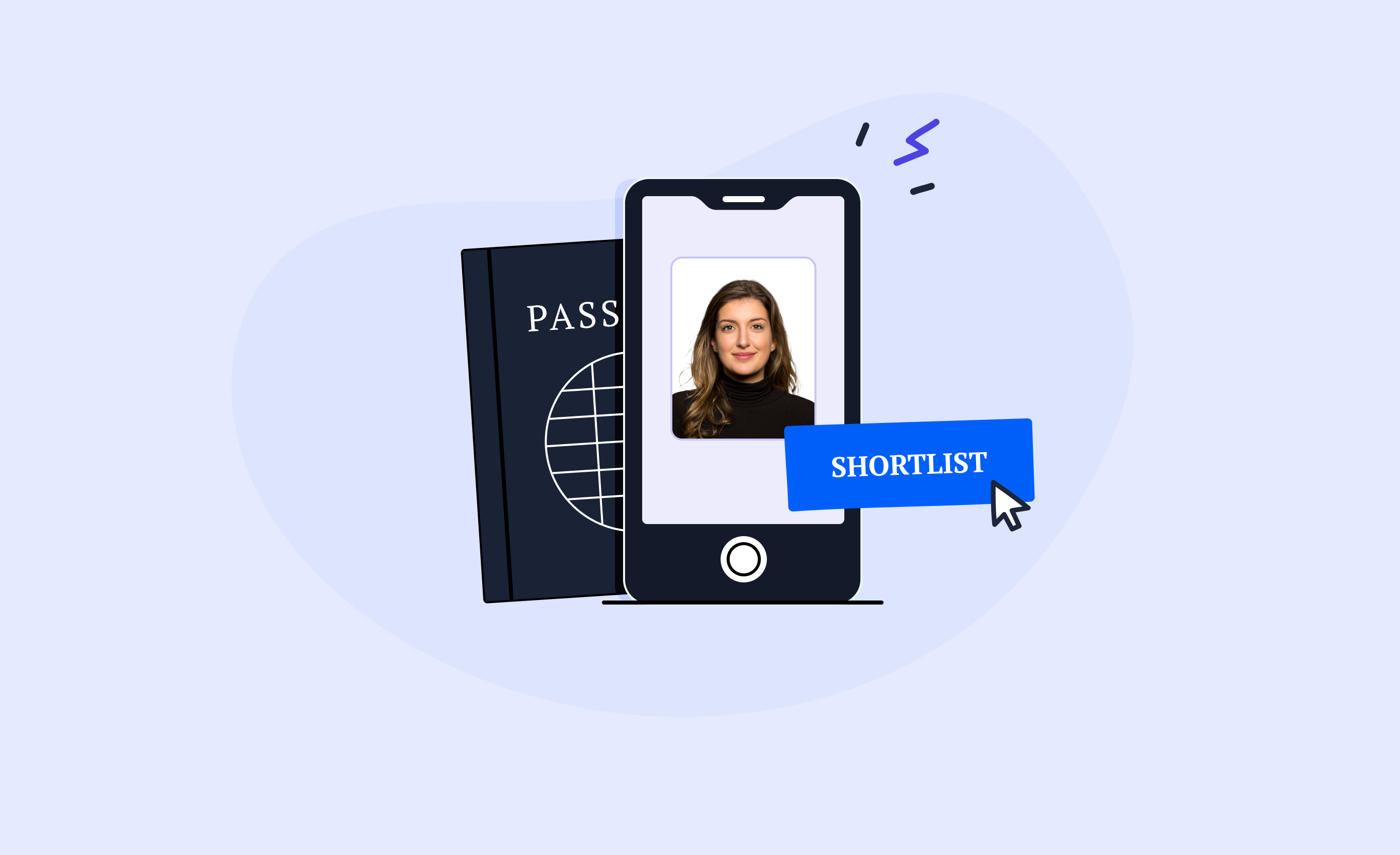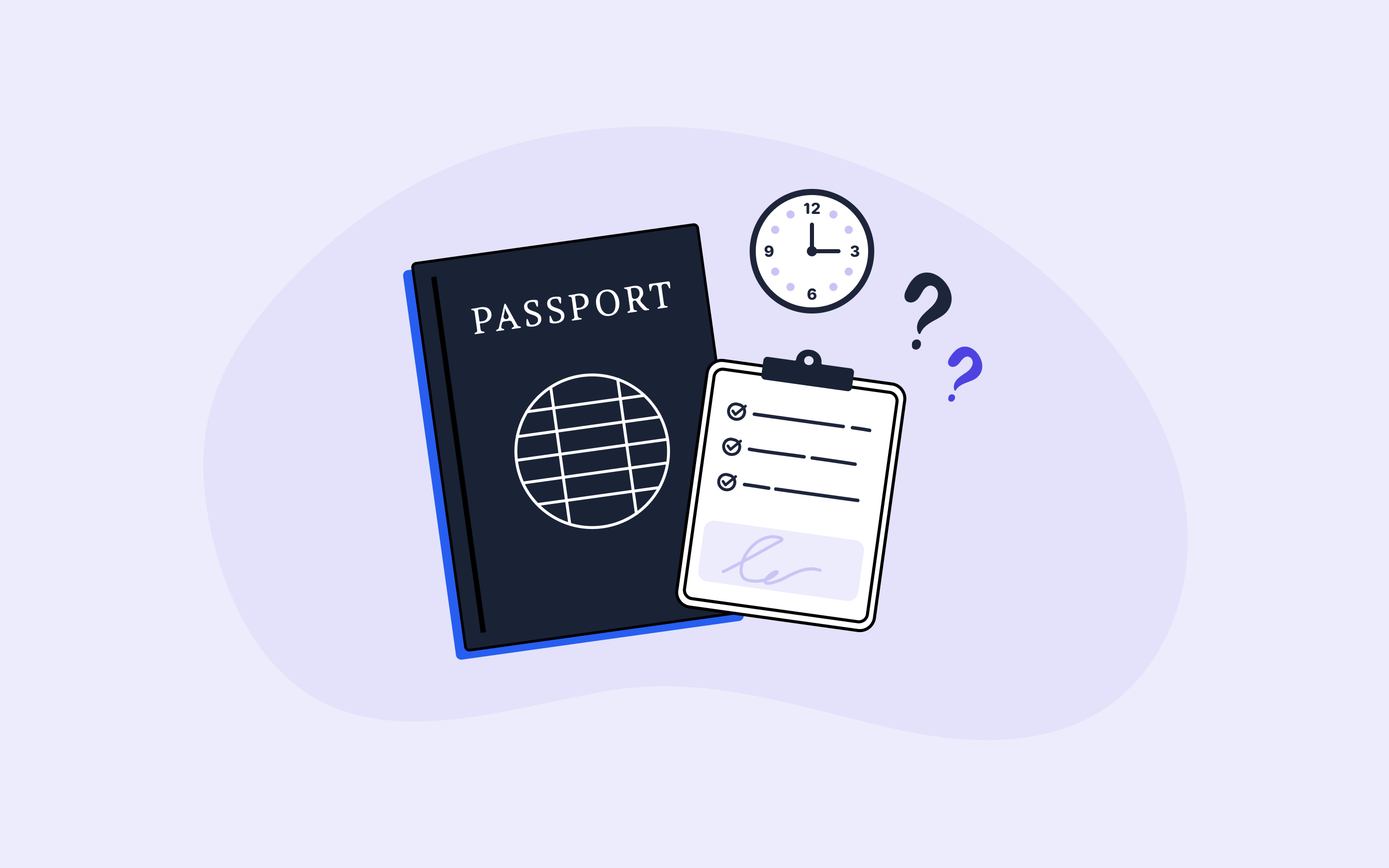We know that it’s important to follow official passport photo requirements. Your face must be visible, the background must be white (or off-white), and your pose straight. But what about hairstyles?
You’ve probably asked yourself questions such as:
“Should I put my hair up or down?”
“Can I take a passport photo with dyed hair?”
“Can you have a fringe in a passport photo?”
You don’t have to wonder anymore. Keep reading to discover the answers to these questions and many others regarding UK passport photos when it comes to hair.
Want to ensure your hairstyle meets passport photo requirements? Check your picture with our Passport Photo Booth App for iOS or Passport Photo Maker App for Android, try as many hairdos as you want, and quit worrying about rejected passport photos!
Get a 100% compliant passport photo with passport photo tool.
- Upload a selfie.
- Our AI crops, resizes, cleans the background, and adjusts the lighting.
- One of our human experts (available 24/7) reviews your photo within minutes.
- Download a high-res JPEG instantly or order prints with 2–3 working day delivery.


Get a digital passport photo that meets UK government standards. Order pro-quality prints delivered to your door with one tap.
Unlimited retakes
Competitive pricing
GDPR & CCPA compliant
Used by 1M+ users annually
I used Passport Photo Online and got a verified UK passport photo from a simple selfie. The process was super fast – and the print arrived in just a few days. My passport was approved, and I saved both time and money!
Curious about other passport photo criteria? Check out these articles:
And coming back to hairstyles—let’s discuss some good practices and what’s best to avoid for your passport photo!
Hairstyles for passport photos: do’s & don’ts
The most important aspect of any passport picture hairstyle is that your hair cannot obscure any of your facial features.
While the HM Passport Office doesn’t offer any specific passport photo hair requirements, there are some rules—or rather, recommendations—that you should keep in mind when choosing a hairdo for your passport photo.
Below, you’ll find concise lists of what to do and what to avoid while preparing your passport photo hairstyle.
Do’s
Thankfully, the UK government’s passport photo hair recommendations are not very rigid. Thus, you can choose almost any hairstyle for your passport photo. Listed below is a detailed breakdown of acceptable passport photo hairstyles:
- Wearing your hair down—and you might want to keep your long hair tucked behind your ears to expose your facial features
- Wearing your hair up—a small bun, a ponytail, or a plait, all of them are fine for your passport photo
- Having a fringe is acceptable. However, ensure it doesn’t cover your eyes or eyebrows. If you have any doubts, it might be best to pin your fringe for passport photos
- Dyed hair is acceptable. However, if your hair is grey or very light, make sure it doesn’t blend in with the picture’s background
- Facial hair—last but not least. All forms of facial hair, from big moustaches to full on beards, are acceptable
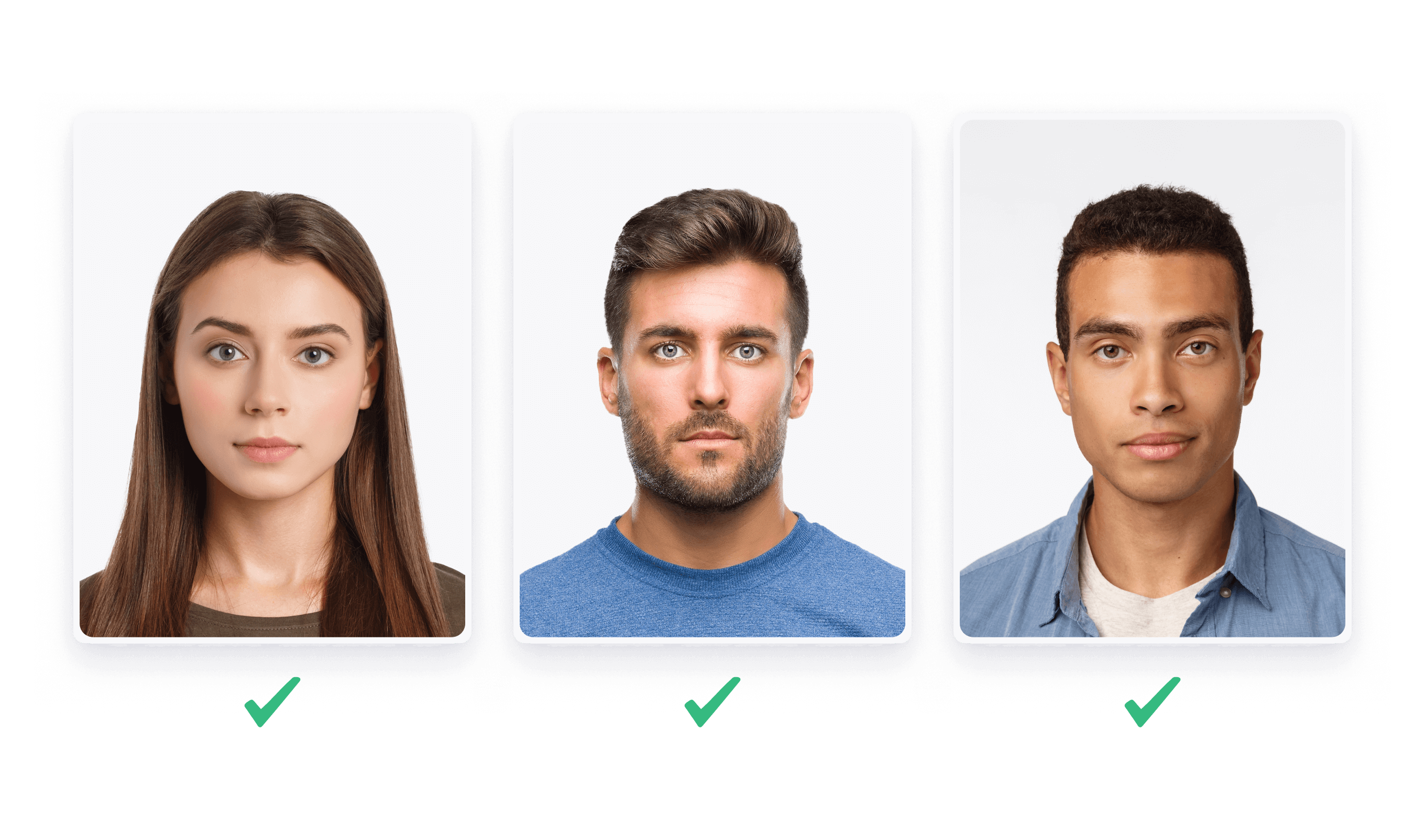
Don’ts
As you may have noticed, any hairstyle or hair colour is acceptable for your British passport photo as long as your facial features are fully visible. However, there are some things you need to consider before taking your picture:
- Hair accessories. While wearing your hair up is fine, you must ensure that no hair clips or other accessories are visible in your passport photo
- Head coverings, including elastic bands. Your face and hair must be clearly visible in your passport photo. The only exception to this rule applies if you are wearing a head covering for medical or religious reasons
- Voluminous hair is also a no-go for your passport photo. A small, clean bun is absolutely fine—unfortunately, if your afro is the envy of all your mates, you might need to adjust it so it doesn’t cover your facial features
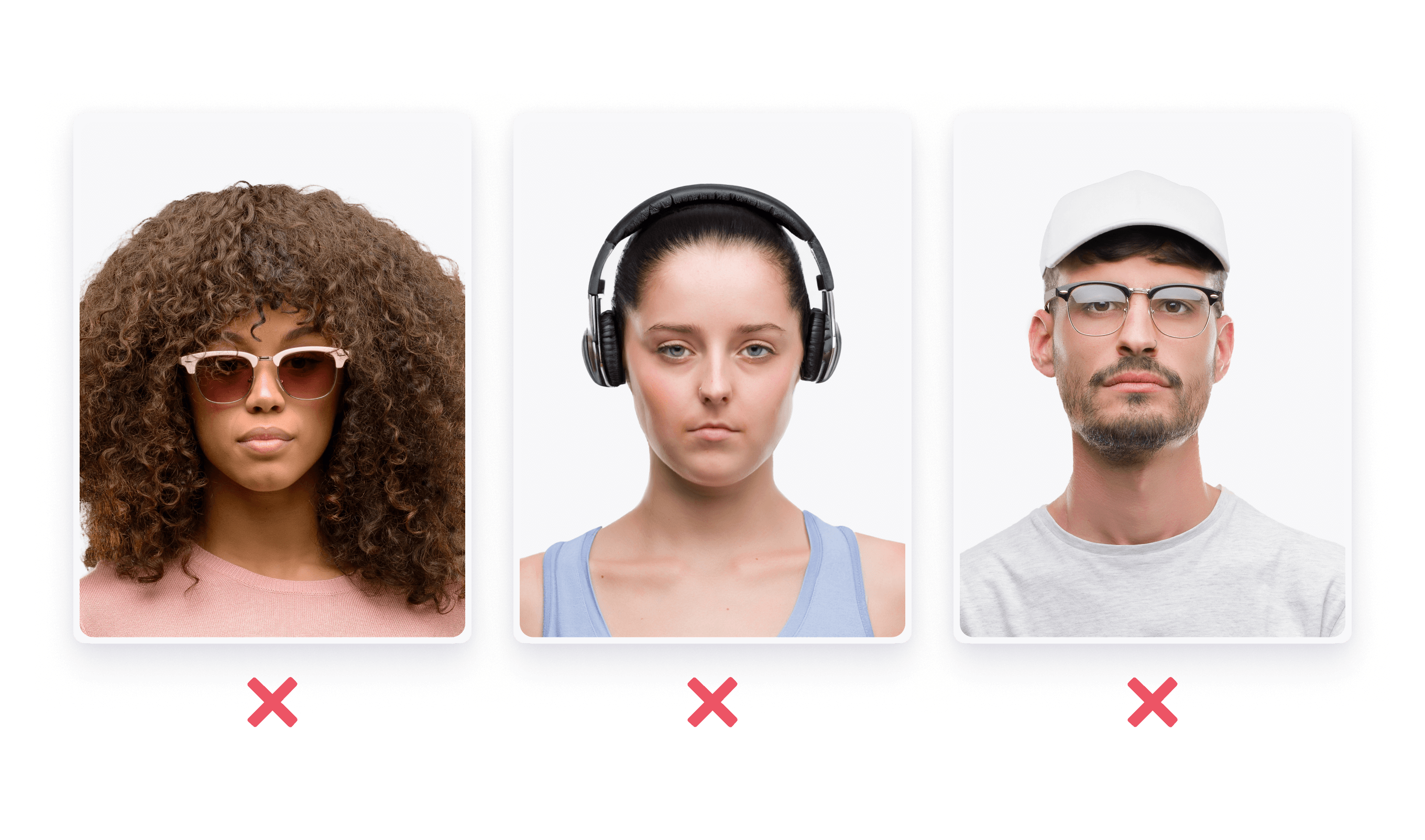
Don’t sweat over your passport photo hairstyle. Check it with our Passport Photo Booth App for iOS or Passport Photo Maker App for Android and ensure your photo is 100% compliant with the official regulations!
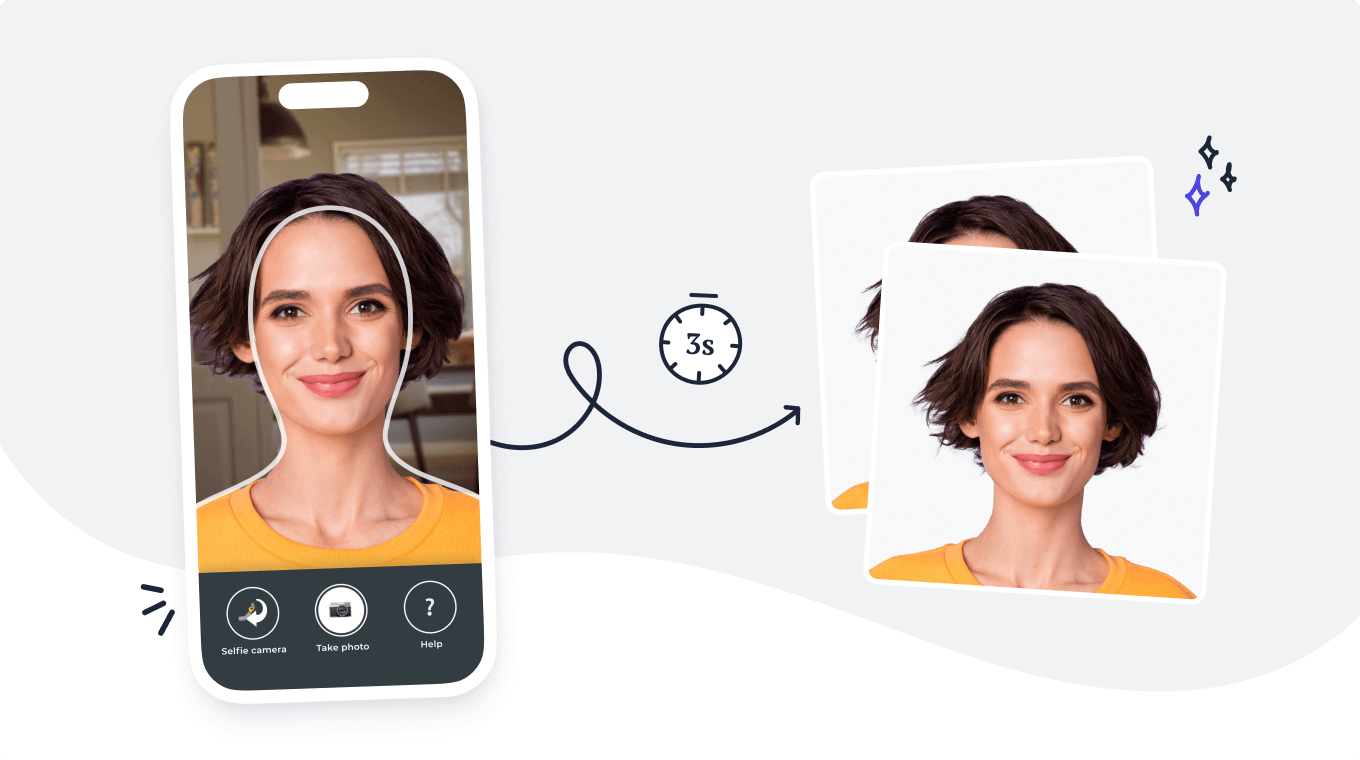
FAQ
How should I wear my hair for a passport photo?
Can you have hair down in a passport photo?
What colour of hair is allowed on the passport?
Can you have a fringe in a passport photo?
Can you have your hair up in a passport photo?
Key takeaway
Summing up—
Most hairstyles are absolutely fine for your passport photo. As long as your hair doesn’t cover your facial features (especially eyes and mouth) and fits in the picture’s frame, the photo will pass the biometric tests.
Remember that any visible hair accessories or head coverings (except religious or medical ones) are unacceptable.

Roxana is a writer with 3+ years of experience. As a Master in psycholinguistics, she blends her passion for language and communication with insights from diverse cultures, making her content resonate with a broad audience.








